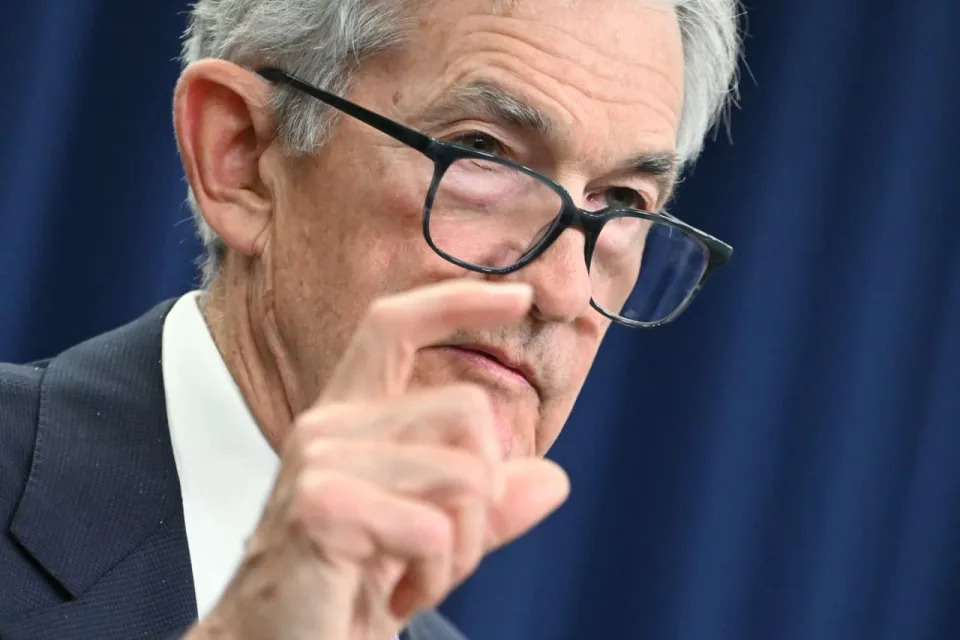Forget the stock-market tumble, the Fed made the right move in a wild week

Federal Reserve Chair Jerome Powell helped spark a wild week on Wall Street, but a signal that policymakers have put further interest rate cuts on pause is looking like the right call after a closely watched inflation indicator and another round of budget brinkmanship on Capitol Hill.
“The message from the November personal income data is that the Fed was correct in stopping right here,” said Steve Blitz, chief U.S. economist at TS Lombard, in a Friday note.
And, he said, the House’s difficulty in passing a spending bill that would avert a government shutdown offered another reason for pausing: “The Trump White House is going to have to negotiate to get its way during the next two years.”
The stock market took a volatile turn Wednesday after the Federal Reserve delivered an expected rate cut while also signaling that it expected to deliver fewer rate cuts in 2025 than policymakers had previously indicated.
When the closing bell rang shortly after Fed Chair Jerome Powell finished his news conference, the Dow Jones Industrial Average DJIA had dropped over 1,100 points and extended its losing streak to 10 straight sessions — the longest in 50 years. The S&P 500 SPX dropped nearly 3% for its worst Fed Day performance since January 2009 and the Nasdaq Composite COMP lost 3.6%.
What was weird about that, as Peter Boockvar, chief investment officer at Bleakley Financial Group, explained, was that the rates market had already came to the same conclusion . The Fed was merely affirming market expectations for around two quarter-point cuts next year rather than four. Likening the market to the title character in the classic children’s book, “When You Give A Mouse A Cookie,” Boockvar noted investors then proceeded to slash rate-cut expectations even further.
What made investors doubtful, in part, was the Fed’s acknowledgement that inflation has proven a bit more resilient than anticipated following hotter-than-expected figures in September and October. “Once again, we’ve—you know, we’ve had a year-end projection for inflation and it’s kind of fallen apart as we’ve approached the end of the year,” Powell told reporters in his news conference. “So that is certainly a large factor in people’s thinking.”
That put a lot of emphasis on Friday’s November personal consumption expenditures index, the Fed’s favored inflation gauge. The PCE reading, while crucial, typically doesn’t offer major shocks, with economists largely able to estimate the reading once they’ve seen the month’s consumer price index and producer price index readings.
The November data was ultimately a touch cooler than expected , with the core PCE reading up 2.8% year over year in November, unchanged from October’s year-over-year reading.
Relief ensued, with stocks roaring back. Comments by Fed officials also helped spur buying, with Chicago Fed President Austan Goolsbee arguing in a television interview that inflation remains on track to reach the central bank’s 2% target and that “over the next 12 to 18 months rates can still go down a fair amount.”
Equities still suffered a losing week, but Friday’s rally saw the Dow finish with a gain of nearly 500 points, or 1.2%, while the S&P 500 jumped 1% and the Nasdaq gained 1.1%.
The PCE data – with soft non-housing services, market services and cooler housing services as well as fractionally negative goods – “supports the Fed’s real-time assessment that the prior months have little signal value for the forward path of inflation,” said Krishna Guha, head of the global policy and central bank strategy team at Evercore ISI, in a note.
“The underlying inflation trajectory is fine – if always a bit bumpy – ahead of Trump shocks. Further confirmation of this in the months ahead should allow the Fed to cut in March and signal June,” he wrote.
Speaking of Trump shocks. Elon Musk, the Tesla Inc. TSLA chairman and world’s richest person, led the effort to torpedo a bipartisan bill aimed at averting a government shutdown this week. The resulting scramble to come up with stop-gap measure before funding for the government was due to run out at midnight Saturday added another layer of uncertainty on markets left reeling in the aftermath of the Fed’s final meeting of 2024.
The budget showdown was largely a sideshow as far as the market was concerned , said Kent Engelke, chief economic strategist at Capitol Securities Management, in an interview. But it gets at what’s likely to be an ugly battle in the year ahead as investors wrestle with the question of how the government will fund ever larger deficits.
Meanwhile, the November economic data continue to indicate renewed inflation in core goods and services, excluding housing and energy, Blitz said, tying it to the resumed improvement in private-sector employment when measured on a rolling 3-month basis. Real wages are rising, providing a boost for discretionary spending while households still have an overhang of savings despite a lower savings rate.
“In sum, with the economy in a slow rebound that is putting in a floor on disinflation, and with no clear sense of what Trump will accomplish in terms of a cohesive program for growth, the Fed is correct to stop here and wait,” Blitz said.

